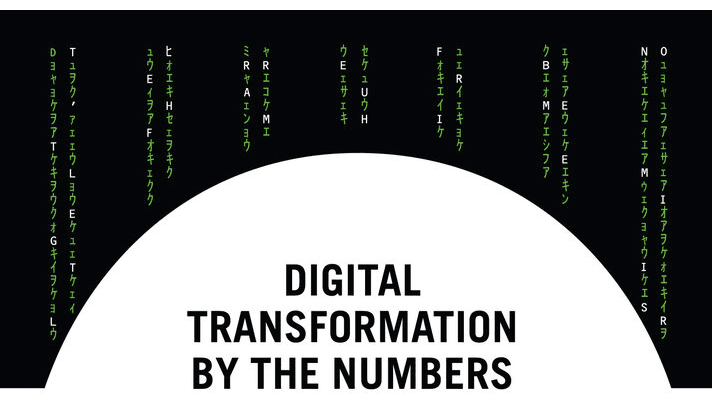
21 Apr CHAPTER THREE
The physical book has been updated to version 6 but this is the original version of chapter 3.
Digital transformation has been in the technical press for years; geeking out on everything from the merits of low-level network protocol design to high-level platform architecture. That’s all good for a nerd like me, but now that the smart technology of digital transformation has matured, it’s time to discuss it from a financial perspective—in particular, from the financial perspective of the leveraged buyout firm. Why? Because it’s a perfect fit for GP portfolio companies, and it’s now ready to be put to work by the digital operating partner as their primary value creation tool.
Digital transformation supports innovation and invention that, in turn, supports a steeper growth profile—a growth trend that is sustainable because going digital is a structural change, not a short-term blip in cash flow.
There are as many definitions of digital transformation as there are different interests in it, but from our perspective, the perspective of maximizing enterprise value, digital transformation is the transformation of a traditional company into a digital-traditional company through one or more digital initiatives. Smart digital enables us to operationally transform most types of portfolio companies into the type of companies that have the highest valuations: tech companies. For example, there are traditional companies like taxicab companies that operate in the physical world and digital companies like Uber that operate in both the virtual and physical worlds. Both roughly do the same thing, but the one that is more valuable is obvious.
Most operational improvements in private equity deal in percentages. Percentage of costs, percentage of working capital and percentage of price, which yield fractional improvements. Digital transformation can hit harder with whole-number improvements in EBITDA and the valuation multiple. Next, we’ll break down enterprise value to see how fund managers can create alpha by using this new operational value creation tool. Time to geek out financially.
ENTERPRISE VALUE
ENTERPRISE VALUE = EBITDA x VALUATION MULTIPLE
As a value driver, smart digital transformation has it all. Not only does it employ digital initiatives to turn down COGS and OPEX, but it can also turn up the two biggest knobs of enterprise value: revenue growth and the valuation multiple. Data-driven operational improvements increase cash flow and provide different options to ratchet up the valuation multiple during the holding period. Enterprise value is our North Star. We always go back to EBITDA and valuation multiple when choosing which digital initiatives to implement when designing a portfolio company’s digital investment thesis.
EBITDA
EBITDA = net income + interest + taxes + depreciation + amortization
Let’s focus on cash first. Examining EBITDA is a great way to isolate the portfolio company’s profitability from its core operations before considering the impact of capital structure, leverage and other non–cash flow items. To do this we will look at net income’s revenue and then margin.
Net income = revenue – COGS – OPEX +/- other profit/(loss) line items
REVENUE
When considering operational improvements as measured by EBITDA gains, the X factor is revenue growth. Revenue solves all problems. Whether from inorganic growth or price rationalization, it’s all good, but the most coveted growth comes from increasing market share and market size—both being the sweet spots of digital transformation because they’re both the sweet spots of digital companies. (See Figure 3.1.)
When we think about the most successful companies as measured by valuation/enterprise value, digital companies such as Microsoft, Apple and Alphabet come to mind. In fact, tech companies, including these, are the most valuable companies in history. Smart digital transformation enables traditional portfolio companies to have the “superpowers” of tech companies, and the common denominator of the most valuable tech companies is that they are all data driven. So the source of these superpowers is data—data to help you understand how customers use your products (usability), what they use your products for (utility) and how they make money with your products (monetizability). Networking tech and software give digital companies a direct connection to their customers through their smart products. This primary customer data drives successful organizations to make better products (innovation) and make new products (invention), but it’s not limited there: it also enables these data-driven companies to innovate their business models and even invent new ones.
This is the “why” of smart digital transformation. To transform traditional portfolio companies into digital-traditional portfolio companies is to make them more data driven, because traditional companies that are data driven (digital-traditional companies) can use the same playbooks as the ones that made Microsoft, Apple, Alphabet and other tech companies so valuable.
•••
The book’s original 8 chapters are freely available on this site if you register with the form below checking “Send book’s intro chapter & book password and add me to your mailing list!” After registering we’ll email you the book password to access all the chapters.
When you have the book password click here to continue reading this chapter.
However, if you would like the full book, updated, formatted and bound, you can








